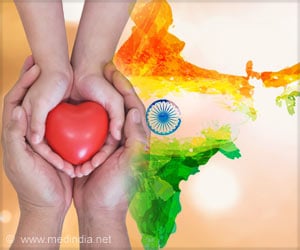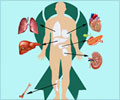Organ donation struggles persist in India as doctors seek an awareness boost way before the organ donation day.

‘India's organ transplant progress is marred by low donation rates, which pushes doctors to urge for a change.
# Organ donation, #India, #Transplantation
’





There was an annual increase of 27 percent in transplant numbers. Yet there is a persistent scarcity of organs, which is also costing precious lives, say health experts. Speaking to IANS, Dr. L K Jha, Director and Senior Consultant - Nephrology and Kidney Transplant at Dharamshila Narayana Superspeciality Hospital Delhi emphasized the importance of recognizing the potential of organ donation from brain-dead individuals, capable of saving multiple lives.
Bridging the Organ Gap
India faces the lowest rate of organ donation worldwide, with a mere 0.1 percent of the population donating their organs after death, in stark contrast to 70-80 percent of people in Western countries who pledge to do so."India loses around 2 lakh kidneys and other vital organs annually, underscoring the need for collective efforts to increase cadaver donations. If we properly harvest even 5-10 percent of all brain deaths for organ donation, it could render the need for living donors obsolete," Dr Jha said.
"Tragically, lakhs of lives are lost every year due to the non-availability of organs, with approximately two lakh people succumbing to liver disease and thousands of patients due to heart disease,” Dr. Sumit Gahlawat, Senior Consultant - Urology and Renal Transplant, Narayana Superspeciality Hospital, Gurugram, told IANS.
In the post-Covid era, there has been a notable resurgence in transplant activities. However, societal reservations remain a significant obstacle, hindering organ donation and transplant initiatives.
Advertisement
Similar patterns can be observed in liver, heart, and pancreatic transplants, where demand far exceeds supply. While there has been some progress in harvesting organs from deceased donors, with the average number of transplants per donor increasing from 2.43 in 2016 to 3.05 in 2022, it is still insufficient.
Advertisement
Urgent Appeal by Indian Doctors
"Out of the 12,387 organs harvested in 2021, which included kidneys, livers, hearts, lungs, and pancreas, only 14 percent were procured from deceased donors. The current situation demands urgent action as the country grapples with an organ famine," Dr. Sumit Gahlawat, Senior Consultant - Urology and Renal Transplant, Narayana Superspeciality Hospital, Gurugram, told IANS."Essentially, we need to focus on cadaveric donation - a generous act of donating organs, such as the heart, lungs, kidneys, liver, and pancreas, from individuals who are declared brain-dead. The transplantation of these vital organs has the potential to save up to nine lives. To address the substantial annual demand for organ transplants, it is imperative for India to actively promote and streamline the process of cadaveric donations," added Dr. Prashant Jain, Sr. Consultant and Head of the Department of General Urology & Andrology, Indian Spinal Injuries Centre (ISIC), New Delhi.
The experts collectively called for a nationwide effort to increase cadaver donations, highlighting the potential to bridge the demand-supply gap and save countless lives. They also emphasized the need for public awareness campaigns, education, and policy initiatives to address the organ famine and ensure that the life-saving gift of organ donation reaches those in dire need.
Source-IANS









